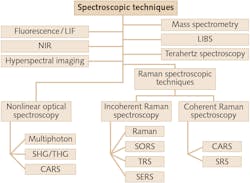
I live in rural upstate New York, where sprawling, multigenerational family farms and small “artisanal” farms coexist. Here, the ubiquitous bumper sticker proclaims “No farms, no food” to remind people that many farms are failing in the face of rising costs and pressures associated with suburban sprawl. These concerns seem relatively minor in comparison to some of the other issues impacting global agriculture, from declining soil quality, contaminated water, and pathogens entering the food supply chain, to potential impacts of climate change, corporate farming practices, and public policies. And the pressures will only increase as the world’s population keeps growing.
Are there market opportunities for photonics technologies and products that will help in this agriphotonics sector? Agriculture is an incredibly complicated sector of the economy and there is not one application that promises radical change or drives investment, such as lidar for transportation. However, there are many photonics technologies that are already making a significant impact in agriculture, and opportunities for more.
The OSA’s Industry Development Associates (OIDA) recently published a review of market opportunities in the agriphotonics market and identified multiple avenues for potential growth. OIDA Senior Advisor Tom Hausken says that, from a global perspective, photonics can help in wealthy countries where corporate agriculture operations are trying to incrementally improve productivity and ensure safety, and in developing countries where, with government or NGO help, it can make a very big difference to small farmers.
The OIDA report segments agriphotonics by its role in the production process or supply chain and as an R&D tool. So there are in-process applications such as UV water treatment and LED horticultural lighting; applications such as satellite or drone imaging, plant and soil monitoring, and production line inspection and monitoring; and corporate- and government-funded R&D into plant health and genetics and veterinary medicine.
The related idea of precision agriculture has been taking root for several years and can have an echo of Industry 4.0 for factories, with every tool (animal or plant) having a digital twin and artificial intelligence predicting crop harvests. Indeed, companies like IBM and Google are entering this field and VC firms are investing in startups. According to one version of the future discussed recently by German Chancellor Angela Merkel, Farming 4.0 with optical sensing technologies will drastically reduce fertilizer and pesticide application while increasing yield.
According to the OIDA report, market opportunities seem greatest now in farm machinery and food animal health, along with producing and analyzing crop chemicals, crop seed, and animal genetics. Numerous photonics companies have already found markets in food production or R&D based on the advantages offered by hyperspectral imaging and spectroscopy, including Avantes, BaySpec, FLIR, Headwall Photonics, Ocean Optics, and Resonon. They are often selling to or working with major agricultural equipment or pharmaceutical manufacturers such as John Deere, Bayer, Nutrien, and Trimble. They are also selling directly to researchers, a market that shows the highest ratio of annual sales growth.
If you’re hungry for a closer look at the rapidly evolving world of agriculture issues, equipment, investors, and startups, here are several U.S. events to consider: World Agri-Tech Innovation Summit (March 19-20, 2020; San Francisco, CA), The InfoAg Conference (July 28-30, 2020; St. Louis, MO), and the International Conference on Precision Agriculture (June 28 – July 1, 2020; Minneapolis, MN).
About the Author

Conard Holton
Conard Holton has 25 years of science and technology editing and writing experience. He was formerly a staff member and consultant for government agencies such as the New York State Energy Research and Development Authority and the International Atomic Energy Agency, and engineering companies such as Bechtel. He joined Laser Focus World in 1997 as senior editor, becoming editor in chief of WDM Solutions, which he founded in 1999. In 2003 he joined Vision Systems Design as editor in chief, while continuing as contributing editor at Laser Focus World. Conard became editor in chief of Laser Focus World in August 2011, a role in which he served through August 2018. He then served as Editor at Large for Laser Focus World and Co-Chair of the Lasers & Photonics Marketplace Seminar from August 2018 through January 2022. He received his B.A. from the University of Pennsylvania, with additional studies at the Colorado School of Mines and Medill School of Journalism at Northwestern University.